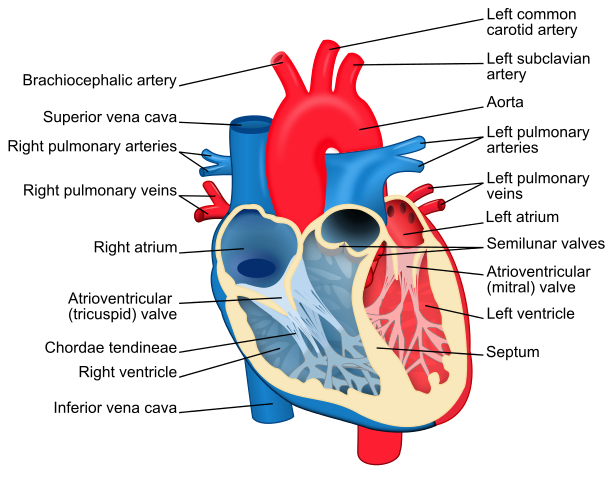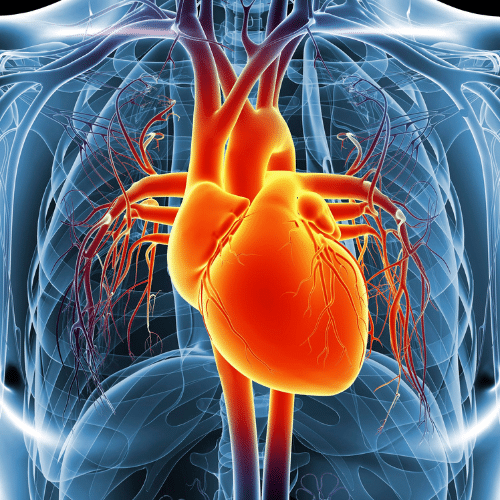FREE CARDIAC ANATOMY NCLEX® PRACTICE QUESTIONS
NCLEX Questions On Cardiac Anatomy and the Cardiovascular System as a whole, Can Be Very Challenging To Answer . . .
...because they include elements like
√ Heart Diagrams
√ Cardiac Muscle Anatomy
√ Cardiac Vein Anatomy
√ Cardiac Valves Anatomy
√ Heart Labels
√ Perfusion
√ Anatomy and Physiology of Heart
√ Heart Function
√ and more...

5 Tips for Answering Cardiac Anatomy (Cardiovascular) NCLEX Questions
1. Master the Cardiac Anatomy Basics:
- Start by building a strong foundation in cardiac anatomy. This includes understanding the heart's structure, including the four chambers (left and right atria, left and right ventricles), valves (such as the mitral, tricuspid, aortic, and pulmonary valves), and major blood vessels (like the aorta, vena cavae, and pulmonary arteries).
- Be able to visualize the heart's orientation in the chest and how blood flows through it during systole and diastole.
2. Keyword Recognition:
- When tackling NCLEX Practice Questions with a cardiac focus, look out for keywords like "cardiac" or "heart." These words indicate that the question pertains specifically to cardiac anatomy or conditions.
- Use the term "rationale" in your practice. After answering a question, ask yourself why you chose that particular answer based on your understanding of cardiac anatomy.
3. Analyze ECG and Imaging Data:
- In cardiac questions, you might encounter electrocardiograms (ECGs) or imaging results like echocardiograms or angiograms. Learn to interpret these diagnostic tools effectively.
- Focus on identifying abnormalities or patterns on ECGs, such as ST-segment elevation or Q-waves, which can indicate myocardial infarction.
4. Understand Blood Flow and Pathophysiology:
- Comprehend the direction of blood flow through the heart and major vessels. For example, oxygenated blood flows from the lungs to the left atrium and ventricle and is then pumped into the systemic circulation via the aorta.
- Familiarize yourself with common cardiac conditions like myocardial infarction, congestive heart failure, and valvular disorders. Understand how these conditions affect cardiac anatomy and function.
5. Practice Critical Thinking:
- Cardiac anatomy questions often involve critical thinking. Analyze patient scenarios, including symptoms like chest pain, shortness of breath, or irregular heartbeats.
- Consider the cause-and-effect relationships in cardiac anatomy. If a valve isn't functioning properly, think about how it affects blood flow and the heart's workload.
Build a Strong Foundation
Remember, the key to mastering cardiac anatomy questions on the NCLEX is consistent practice and a deep understanding of the heart's structure and function. Regularly work through NCLEX Practice Questions that focus on cardiac anatomy and review your rationales to reinforce your knowledge. As you become more confident in your cardiac anatomy skills, you'll be better equipped to excel on the NCLEX and in your nursing career.

As you embark on your journey to master the art of tackling
cardiac anatomy NCLEX questions, you'll discover a profound sense of satisfaction and appreciation for the intricacies of the human heart. This remarkable organ, nestled securely within your chest, is not just a mechanical pump but a captivating piece of biological engineering that keeps the symphony of life flowing. As you delve deeper into its
chambers, valves, and vessels, you may find yourself not just answering questions but developing a genuine affection for the cardiac system.
The world of cardiac anatomy NCLEX questions might seem daunting at first, but trust me, it gets more intriguing with every passing question. Picture yourself as a detective,
peering into the inner workings of this vital organ, deciphering its secrets one query at a time. Your journey into the heart's labyrinth will not only make you a more proficient nurse but also deepen your appreciation for the pivotal role it plays in countless disease processes.
As you gain proficiency in deciphering cardiac anatomy NCLEX questions, you'll begin to uncover the heart's symphony. You'll understand how the atria gracefully receive oxygenated blood, passing it onto the powerful ventricles, which, in turn, propel it with rhythmic precision into the systemic and pulmonary circulations. It's like conducting an orchestra, and you, my talented nursing student, are the conductor.
Moreover, your
growing expertise in cardiac anatomy will empower you to grasp the complex dance of electrical impulses that regulate each heartbeat, as seen in ECGs. The ST-segments, Q-waves, and T-waves will cease to be mere lines on paper; they'll become the musical notes of the heart's unique rhythm, allowing you to diagnose and respond to cardiac irregularities with confidence.
But the true beauty of mastering cardiac anatomy doesn't lie solely in acing NCLEX questions. It's about how this knowledge will accompany you on your nursing odyssey. Whether you're caring for a patient with
congestive heart failure, guiding someone through a
coronary artery bypass graft surgery, or monitoring a
post-MI patient's recovery, your profound understanding of cardiac anatomy will be your guiding light. It will enable you to make critical decisions, provide compassionate care, and offer much-needed reassurance to your patients during vulnerable moments.
So, embrace the world of cardiac anatomy NCLEX questions with enthusiasm, my fellow nursing student. For in the depths of your studies, you'll uncover not just answers but a profound appreciation for the marvel that is the human heart—a treasure trove of knowledge that will serve as your compass throughout your nursing journey.
Happy Nursing!